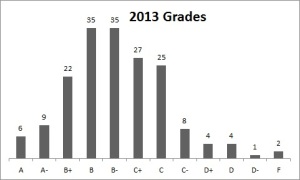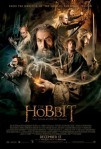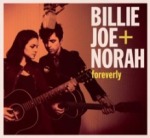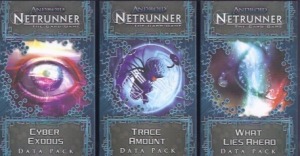Webcomics Roundup: Trends for 2014
 For me, the most exciting new webcomic in recent months is Jason Shiga’s Demon. As the author of Fleep and Meanwhile, any new project from him is worth a note. He describes this as his most ambitious project to date, though. It’s going to be the story of a man who tries to figure out a supernatural event (he keeps committing suicide but waking up unscathed), which leads to him using math and logic to commit ever-bigger atrocities.
For me, the most exciting new webcomic in recent months is Jason Shiga’s Demon. As the author of Fleep and Meanwhile, any new project from him is worth a note. He describes this as his most ambitious project to date, though. It’s going to be the story of a man who tries to figure out a supernatural event (he keeps committing suicide but waking up unscathed), which leads to him using math and logic to commit ever-bigger atrocities.
It’s not structured like a typical webcomic. Shiga has already written the 720-page story, and the plot moves slowly, letting the story breathe as if the reader has the whole work in front of them instead of just a daily update. But also, he’s selling subscriptions to receive the comic (as paper or PDF) monthly, with the catch that the subscription will let you read through the story slightly faster than it shows up online. Whether or not that “look into the future” is important, I am intrigued by the idea of supporting a webcomic by buying issues as it comes out instead of maybe buying a book after the fact. You can sign up with monthly Patreon payments or in one lump payment on his site, and you have until the end of April to join in time for the first issue.
Other than Demon, my main focus on this article is looking at current trends in webcomics. Demon introduces one of them very nicely, though: Patreon is becoming a real success, with more and more webcomics signing up. These are almost universally established ones, so I don’t expect it to provide an income for anyone who is new to the scene. Still, it’s wonderful to think that the creators in this popular but low-paying medium might start to earn a reliable income.
Also, I am pretty proud to say that I recognized Patreon’s potential months before any big-name webcomics were signed up. As just another random hobbyist, I don’t usually get to identify trends until they’re already known. This time, though, I can claim credit for a great prediction.
 As an example of a less insightful article of mine, I talked about the blurring lines between print and web comics back in 2011. That was still noteworthy back then, though certainly not a new idea. Three years later, we see this cross-over all the time. If anything, what surprises me now is that the barriers between the two still exist at all. At this point, it’s only the established patterns of their different fan-bases that keep the two apart at all. Creators are moving between these two sides more than ever.
As an example of a less insightful article of mine, I talked about the blurring lines between print and web comics back in 2011. That was still noteworthy back then, though certainly not a new idea. Three years later, we see this cross-over all the time. If anything, what surprises me now is that the barriers between the two still exist at all. At this point, it’s only the established patterns of their different fan-bases that keep the two apart at all. Creators are moving between these two sides more than ever.
 If you want a couple recent examples, cult artist Richard Sala is publishing his new work as a webcomic. Super-Enigmatix has his usual hallmarks, with horror elements and a visual style like an expressionistic children’s book. The introduction leans heavily on cliché, but it’s building some intriguing elements already. And if you want to see a webcomic creator moving into print, check out Lumberjanes #1, which is out from BOOM! Studios today. This is co-written by Noelle Stevenson, whose Nimona was last year’s best debut on the web.
If you want a couple recent examples, cult artist Richard Sala is publishing his new work as a webcomic. Super-Enigmatix has his usual hallmarks, with horror elements and a visual style like an expressionistic children’s book. The introduction leans heavily on cliché, but it’s building some intriguing elements already. And if you want to see a webcomic creator moving into print, check out Lumberjanes #1, which is out from BOOM! Studios today. This is co-written by Noelle Stevenson, whose Nimona was last year’s best debut on the web.
What does the future hold? I don’t have anything definite to point to yet, but I’m starting to wonder whether we’ll see a move towards syndication or work commissioned by other sites. I first noted this last year regarding all the established talent who was making comics based on NAMCO video games for Shiftylook. But since then, The Nib has opened on the online magazine Medium, serving basically as their comics page. It features everyone from Tom Tomorrow to Zach Weinersmith and Rich Stevens. Stevens has also started making a regular comic for Macworld.
This all seems to be more than just a coincidence, but it’s too early for me to tell if this is really a trend. As far as I know, no one has talked publicly about what work like this pays, and how it compares to running a comic on your own site. I’m very curious about how it impacts the audience, as well. Presumably, these creators are directing their loyal audience to these other sites, and in turn people who frequent Medium and Macworld are learning about comics like Diesel Sweeties. Maybe the key to success will be to maintain this mix to cultivate your dedicated audience while also getting the general public’s attention. Whatever the reason, though, there’s a certain irony to the idea that as traditional newspaper comics die out, their replacements may be finding their way back to a syndication model.
I’ll keep checking in with all these trends as they come up. Meanwhile, if you have any leads on the pros and cons of these new options for syndication, I’d love to hear them.





 First of all, I question the cost. The point of a Living Card Game is that you have a known cost up front, because you buy sets with all the cards instead of buying random booster sets. But that doesn’t make it cheap by any means. These data packs retail for $15 each, and they provide three copies each of twenty different cards. That’s almost $1 for every new card type, and you’re not likely to use all the cards anyway.
First of all, I question the cost. The point of a Living Card Game is that you have a known cost up front, because you buy sets with all the cards instead of buying random booster sets. But that doesn’t make it cheap by any means. These data packs retail for $15 each, and they provide three copies each of twenty different cards. That’s almost $1 for every new card type, and you’re not likely to use all the cards anyway.
